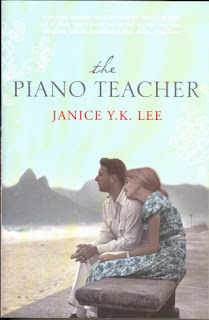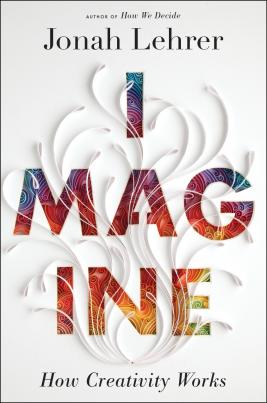identification
noun
- a process by which one ascribes to oneself the qualities or characteristics of another person.
- perception of another as an extension of oneself.
Psychologists tell us that “we like best those who are like us,” but if we take into account that everyone has different tastes and personalities, the task seems monumental. Yet, there is an almost universal agreement that most of us are drawn to positive/optimistic characters like Lucy Ricardo or Forrest Gump. Sounds simple enough, except that not every character can be like them. Time and time again, we’re told that nobody likes perfect characters because they’re not true to life, that our protagonists should have flaws and that they should learn/change/grow along the way in an emotionally satisfying way. With all that in mind, how do we balance flaws and appeal? Logic tells us that the more flawed the character, the bigger his/her arc will be. And if we have a big character arc, we just may touch our audience. But if nobody likes him/her, how do we make the reader continue reading?
Fascinating antiheroes in literature and film are proof that this can be done. In search of answers, I came across a simple concept to solve this dilemma: unsympathetic characters must COMPENSATE their flaws with a compelling trait. This quality should be gripping enough to keep the reader's interest, despite his/her feelings for the mean main character.
Ideally, negative protagonists should have one or more of these five traits:
1. HUMOR
There is something irresistible about a person who can make us laugh. When we first meet Melvin Udall (Jack Nicholson) in As Good as it Gets, we immediately dislike him, yet we can’t help but laugh at his quirky habits and some of his snarky comments. We are hooked by this unusual and utterly unlikeable character (perhaps because we’re curious to know what crazy thing he’ll say/do next.)
At the beginning of When Harry Met Sally, Harry (Billy Crystal) is full of himself and obnoxious, but some his comments are so outrageous they’re funny. By the middle of the film, he has matured and his insights on men/women relationships start to make sense.
 |
| For ten years, Sally could not stand Harry. |
In Overboard, Joanna (Goldie Hawn) is a millionaire snob who hires a carpenter called Dean (Kurt Russell) to build a closet on her yacht. When the task is complete, she refuses to pay him as the closet was not done to her full satisfaction. That evening, after she falls overboard and suffers from amnesia, Dean claims her as his wife hoping to get his money back by having her take care of his kids and house. Joanna must adjust to a humble, rural lifestyle and do things she’s never done before. As expected, she encounters a number of funny situations that, eventually, win the audience’s (and Dean’s) favor.
 |
| Joanna experiments in the kitchen for the first time. |
What do Scarlett O’Hara, Michael Corleone, the Vicomte de Valmont have in common? They all have power. Scarlett is so beautiful and charming no man can resist her. She also has the power to overcome the hardships that come her way during the war.
 |
| Scarlett knows exactly how to get what she wants. |
Valmont (Dangerous Liaisons) can conquer any woman he sets his eyes on. For his love, they’re willing to ruin their reputations and their marriages.
 |
| The irresistible and cruel Vicomte de Valmont |
3. SYMPATHY
Clint Eastwood is a brilliant director. When we first meet the bitter, rude and racist protagonist of Gran Torino (Walt Kowalski), he’s standing by his wife’s coffin during her funerary service and his badly dressed, ill-behaved, self-centered grandchildren are giggling and checking their cell phones. In addition to these offenses, his two sons are whispering a joke at his expense. We are immediately sympathetic to this character even though we can see from his expression that he’s not a warm and likable man.
 |
| Walt Kowalski surrounded by his uncaring family |
The protagonist of Girl with a Dragon Tattoo, Lisbeth Salander, is not the most charming heroine: she’s an antisocial computer hacker who never smiles or has a kind word for anybody. However, we see early on that she’s had a rough life. Not only does she live a lonely existence in a cold, humble apartment, but also, the only person she seems to love (her guardian) has a stroke and she’s left in the hands of a disgusting man who abuses her.
When something bad happens to a character or those he loves, we feel sympathy for him (if the author handles the situation well). In addition to sympathy over Walt Kowalski’s crappy family and his impending loneliness, he has positive traits to compensate for the venom that spills from his mouth every time he speaks: he’s hard-working, brave, loyal, straightforward and kind to his dog.
4. JEOPARDY
Both Lisbeth Salander and Walt Kowalski have another thing in common. Even though they’re tough and confident, they’re vulnerable. Salander is a small, thin woman, with a guardian twice her size who has no conscience. Kowalski is a sick old man who, despite all his weapons and war experience, lives alone in a neighborhood ran by gangs. The two of them are never safe and we cringe every time they take a bold action (which is often).
 |
| The Girl with a Dragon Tattoo is always in danger. |
5. MORAL CODE
If we can see early on that an unsympathetic character is, at the core, a good person, we’re more likely to tolerate his/her bad behavior. We may even start rooting for him/her. Salander does a lot of illegal things, but she has a sense of justice that we can sympathize with. She punishes evil and cruel men. We may not agree with her methods, but we instinctively know that she wouldn’t harm an innocent.
Kowalski has no regards for other people’s feelings and is quick to insult them, but he recognizes that his young neighbor has a good heart and appreciates/respects his virtues. He’s willing to commit the ultimate sacrifice in order to give this kid a chance in the world. Despite his many flaws, Kowalski has a clear sense of right and wrong.
Although Melvin Udall is consistently spiteful to his neighbor (Simon), he gives him shelter when the latter has nowhere to live. In addition, he takes good care of Simon’s dog despite his initial irritation toward the animal. This shows us he has a good heart.
 |
| The misanthropist, obsessive-compulsive Melvin proves he has feelings when he helps Simon. |
BALANCING THE GOOD AND THE BAD
In his book Writing the Breakout Novel, agent Donald Maass points out that the most common mistake he finds in submissions is that the protagonist is unsympathetic. In an attempt to create flawed and interesting main characters, writers make them too dark and that can be “wearisome,” he says. Although he agrees that perfect individuals are not engaging and transformation can be very powerful in a story, redemption only comes at the end of a novel and readers may not stick around for that long. The key to make readers care, he says, is to balance negativity with sympathetic qualities and give dark characters “moments of humanity.” Maass offers the following tip: if a character is aware that he’s self-destructive, wrong or in trouble and makes an effort to change, the reader will remain engaged. The example he gives is Conrad Jarrett in Ordinary People.
Conrad is a depressed teenager who’s just returned home from a psychiatric hospital after a suicide attempt following his brother’s death. Even though his thoughts are dark and depressive most of the time, Conrad makes an attempt to get better and take it “one day at a time.” The reader starts rooting for him.
“Readers need reasons to hope. To write the breakout novel, it is necessary to provide readers those reasons not just at the end but all the way through.” (Maass, Donald. Writing the Breakout Novel. Pg. 117)
How have you handled your own dark characters? Can you think of other imperfect protagonists in literature and what has hooked you to them?
Erasure - I Love to Hate You
Powered by mp3skull.com




















